Things you should know before you play Pathfinder: Wrath of the Righteous
The C in CRPG does not stand for "chill".
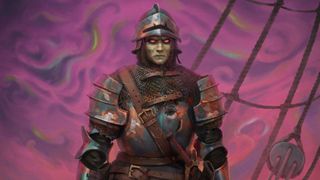
Like Pathfinder: Kingmaker before it, Wrath of the Righteous is a CRPG so deep that there are probably whales down there. With a huge selection of classes to choose from, each split into sub-class archetypes, as well as prestige classes that can only be entered after bouncing between multiple base classes as you level up, it's a theorycrafter's dream. That's before you even get into the mythic ranks that bolt on top.
It's an intimidating system that only gets more complex, adding kingdom management and army-scale battle systems, as well as pitting you against enemies with resistances and quirks. Fortunately pop-ups explain some of the basics or point out when you've given someone two items of gear with bonuses that don't stack, but there's other stuff worth knowing too. Here are some beginner's tips.
You won't be locked into a mythic path
Mythic paths let you become basically immortal, choosing between several flavors of demigodhood. You'll be well into the story before you have to choose one, however.
There are multiple steps to this. First, you'll have opportunities to "unlock" mythic paths as you're exposed to the relevant kinds of supernatural energy. You can unlock as many as you want, and it's impossible to miss the first two—angel and demon. Others show up in the first chapters as you do sidequests and explore. Having mythic paths unlocked means related dialogue options will appear, but you won't be committed to them.
When you become a mythic hero you choose your first power from a list of generics, but it's not until the third rank of mythic hero much later that you actually need to settle on one of the paths you've unlocked. Even more will become available later—some paths only show up if you choose another first, and then are tempted away from it.
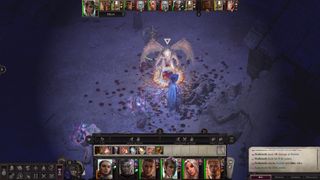
You can change the speed in turn-based mode
Wrath of the Righteous lets you choose between realtime-with-pause and turn-based combat, and you can switch between the two by pressing T. If you prefer the precision of turn-based but would like to switch to RTWP to blitz through some trash mobs, you can.
But you don't need to, because you can just speed up the animations instead. In the "Game" section of the options menu you'll find toggles related to turn-based mode, at the bottom of which are two sliders to increase party animation speed and enemy animation speed. Push both up to 3.0 and battles will fly by.
The biggest gaming news, reviews and hardware deals
Keep up to date with the most important stories and the best deals, as picked by the PC Gamer team.

Maybe don't be an archer
It's worth a heads-up that early on your party will lean toward ranged characters. It's not quite as rough as Kingmaker, which threw you into the tutorial with only a flimsy gnome illusionist and a halfling bard as backup, but there's still a slight bias in the companions. While you do get a paladin to tank with, the rest of your party will be an archer, a spirit hunter (tough later, fragile at low levels), and then a rogue, witch, oracle, and wizard. Hours later you accrue a selection of frontline fighters to choose from, but even then you'll probably end up with multiple archers competing for any magic longbows.
Which is why, if you're having trouble choosing between the 25 (!) base classes, it's worth narrowing it down to those good at going toe-to-toe. Bloodrager is a popular choice—a barbarian with supernatural powers based on their bloodline. Cavalier and warpriest both seem apt for a game about joining a crusade, and cavaliers get to try the new mounted combat system. If you play a bard, their ability to cast spells while holding a shield means you may as well go sword-and-board, and if you want to be a magus they've got an archetype called sword saint that's all about magically buffing weapons and armor.
Any class can work, but if you like to leave companions in their roles rather than giving them a respec makeover, you'll end up with a surplus of back-row choices. A protagonist who leads from the front can balance that.
Swarms still suck
Kingmaker had an infamous early-game encounter with spider swarms that demolished many a new player because in the Pathfinder rules those spider swarms can only be hurt by elemental damage, which low-level parties don't have much of. Wrath of the Righteous isn't quite as punishing, but its rat swarms may still come as a shock. They're far more dangerous than the cultists and dretches you'll be used to when they show up. The burning hands spell is a good way to deal with them. Don't underestimate the rat.
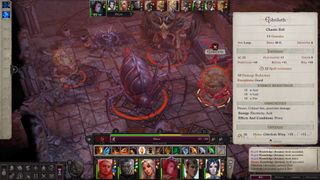
Demons don't care about lightning
The main enemies in Wrath of the Righteous are demons, who have a laundry list of resistances. Mouse over the portrait of a demon in the initiative order for a closer look at their stats and you'll usually see elemental resistances to fire, acid, and cold, and often straight-up immunity to electricity and poison. They'll have damage resistance, spell resistance, and some are immune to mind-affecting spells or have true seeing, which makes them immune to illusions.
If a specific kind of damage can bypass damage resistance, it'll be listed after the slash, so "DR 3/holy" will ignore the first three points of damage unless it's from a holy weapon. Cold iron weapons are a reliable way to bypass most DR. Weapons with a high enough enhancement bonus (the + after their name) ignore DR too. There's also a mythic feat that lets you pick an elemental damage type, which will then ignore resistance.
To defeat spell resistance, choose the feats spell penetration and greater spell penetration for your casters.
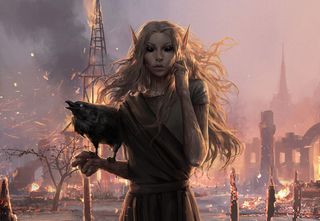
Hex for success
When you recruit the stigmatized witch Ember she's carrying a crossbow, but her burned hands make her terrible at shooting. She's even worse at stabbing. After a few levels Ember will be working wonders with fire-based spells, which is kind of ironic considering, but before that you may not know what to make of her.
The secret is that her hexes aren't limited the way most abilities are. Instead of a set number of uses per day, most hexes can be used over and over, though only once per target. That means you can sling a slumber hex at every enemy in every fight. They'll have a saving throw, but odds are you'll send some cultists to sleepyland. When they're down, ignore them until other threats are dealt with, then select coup de grace (it's in the actions section above the middle of your hotbar) to take them out.
The vulnerability curse hex provides another way around demonic resistances, and cackle will extend the duration of other hexes. You can cackle as a move action too, which is convenient in turn-based mode, and paints a delightful image.
You can take your time
Kingmaker had quests with strict time limits, but Wrath of the Righteous is more generous. Quests with an hourglass next to them in the journal need to be done before the end of the current chapter, but otherwise there's no rush. Just prioritize sidequests with hourglasses ahead of anything that advances the chapter's storyline.
If you spend too much time resting away from the current home base your corruption level will go up, eventually resulting in penalties. That can be reset by having your next rest somewhere sanctified against the energies of the Worldwound, like the Defender's Heart or your capital.
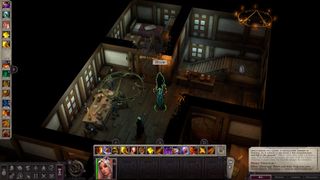
Respec yourself before you wreck yourself
The Pathfinder rules have plenty of traps for new players, suboptimal feats and other options you won't realize are flawed until you've seen them in action. If you don't like how a build is turning out, talk to Hilor to retrain for gains. You can respec party members too. Your first few retrains are free, but after that it'll cost you.
Hilor starts out at the Defender's Heart, then in chapter three moves to the second storey of Drezen's nameless inn.
You can also respec by downloading one of the handy Pathfinder: Wrath of the Righteous mods.
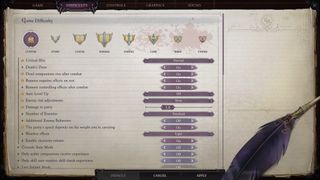
The difficulty options are there for a reason
Unlike Kingmaker, in Wrath of the Righteous "normal difficulty" doesn't translate to "the Dungeon Master hates you." That said, you may still want to tweak it. You can change how many enemies are in fights, whether control effects like paralysis end immediately after combat, whether equal experience points are earned by your inactive Pokémon—I mean party members—and so on. There's even an auto-mode for the crusade if you don't want to bother with the tactical battles.
Most options can be altered on the fly, so don't worry about being stuck with your initial choices. Only the "Last Azlanti mode", which limits you to a single save, can't be toggled midway.
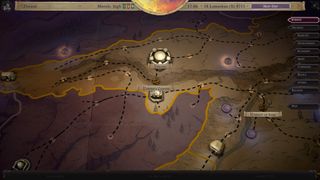
Crusade aid
Once you get access to the crusade menu, you'll be able to move armies across the map. Make sure to recruit a general for your first army, preferably one with the master of maneuver feat. Each level of that increases the number of units an army can have by one. Use the army to clear a path for your party, since you can't pass forts otherwise and will have to make a stealth roll to bypass demon armies without a fight.
At the top right of the crusade management map are some options you might have missed, including one to autoresolve tactical combats. It'll lose more units than you would doing it manually, and sometimes straight-up lose battles you could easily win, but you'll have the option to go back and re-do the fight yourself each time.

Be fast and slippery
Flashy high-damage magic is tempting but two of the best spells available, especially at lower levels, are haste and grease. Use haste to give everyone an extra attack, a boost of speed, and some extra armor class, and use grease to trip enemies. Dropping a quick grease spell on a chokepoint turns a tricky defense into an easy win, unless you're up against fliers. Coup de grace anyone who falls.
Spells that remove conditions will eventually become situational lifesavers, like dispel magic, restoration, and delay poison, communal. Learn and memorize those when you can. It's hard to cast fireball when you've been simultaneously poisoned and level-drained back to preschool.
Read books and know things
Some books give small bonuses to skills and stats. Right-click on books in your inventory and click info to see the full text, and then check the abilities tab to see what you've learned. Only the main character earns these bonuses.

Jody's first computer was a Commodore 64, so he remembers having to use a code wheel to play Pool of Radiance. A former music journalist who interviewed everyone from Giorgio Moroder to Trent Reznor, Jody also co-hosted Australia's first radio show about videogames, Zed Games. He's written for Rock Paper Shotgun, The Big Issue, GamesRadar, Zam, Glixel, Five Out of Ten Magazine, and Playboy.com, whose cheques with the bunny logo made for fun conversations at the bank. Jody's first article for PC Gamer was about the audio of Alien Isolation, published in 2015, and since then he's written about why Silent Hill belongs on PC, why Recettear: An Item Shop's Tale is the best fantasy shopkeeper tycoon game, and how weird Lost Ark can get. Jody edited PC Gamer Indie from 2017 to 2018, and he eventually lived up to his promise to play every Warhammer videogame.
Most Popular

